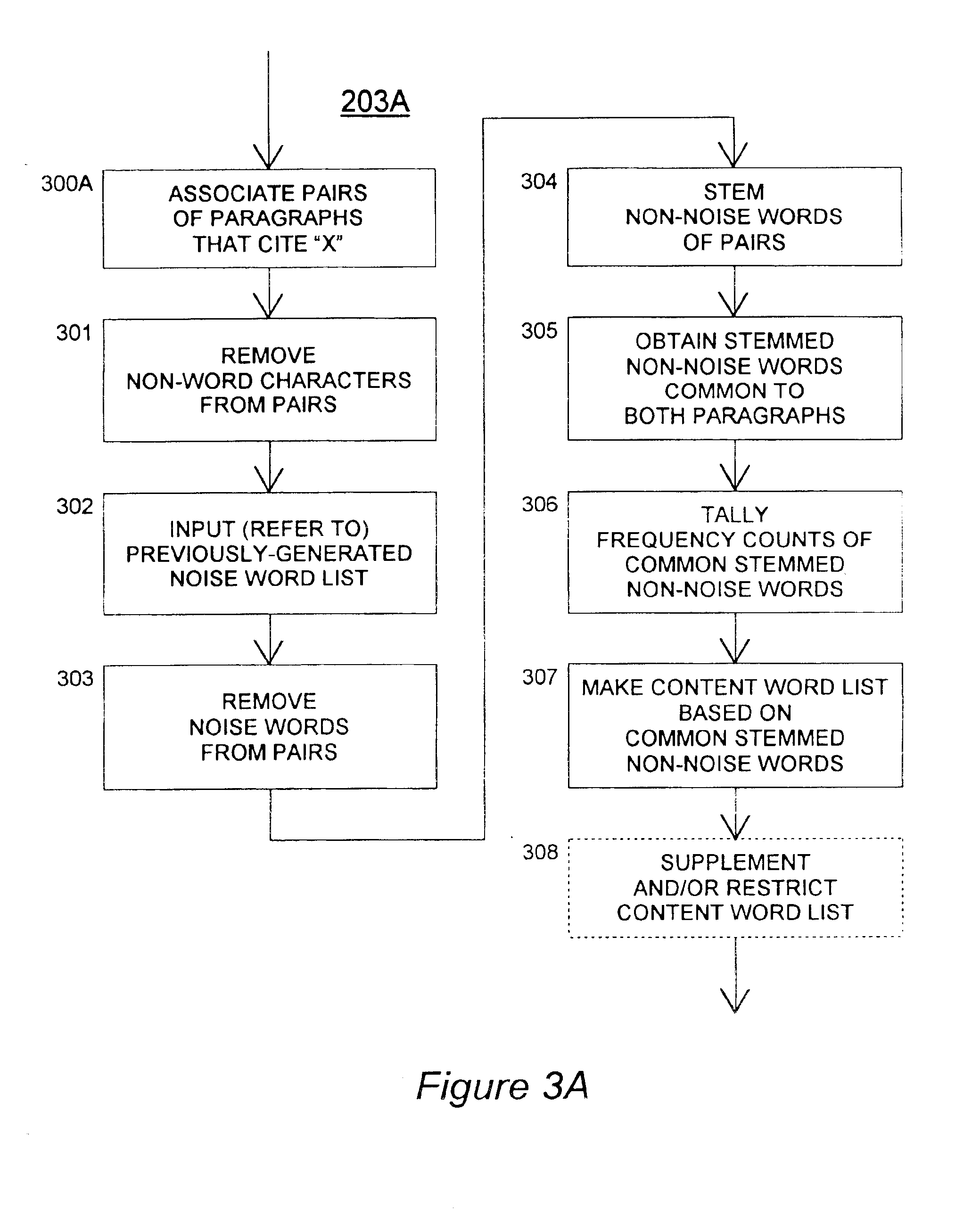Automated system and method for generating reasons that a court case is cited
a technology of automatic text processing and court case, applied in the field of automatic text processing systems and methods, can solve the problems of not intrinsically related, no conventional system, and no conventional system,
- Summary
- Abstract
- Description
- Claims
- Application Information
AI Technical Summary
Benefits of technology
Problems solved by technology
Method used
Image
Examples
2b and 3b
Paragraphs 2B and 3B are not paired because they are in the same case.
The following is an example of one pair of paragraphs for citing instances of Ziganto v. Taylor. The citing cases are McDougall v. Palo Alto School District, 212 Cal. App. 3d 422, and Jarrett v. Allstate Ins. Co., 209 Cal. App. 2d 804.Ziganto in McDougall: We therefore turn to the original deed of William Paul. Since no extrinsic evidence was introduced in the court below, the construction of the deed presents a question of law. We are not bound by the trial court's interpretation of it, and we therefore proceed, as it is our duty, to determine the effect of its foregoing provisions according to applicable legal principles. (Estate of Platt (1942) 21 Cal.2d 343, 352 (132 P.2d 825); Jarrett v. Allstate Ins. Co. (1962) 209 Cal.App.2d 804, 809-810 (26 Cal. Rptr. 231); Ziganto v. Taylor (1961) 198 Cal.App.2d 603, 606 (18 Cal. Rptr. 229); Moffatt v. Tight (1941) 44 Cal.App.2d 643, 648 (112 P.2d 910).)Ziganto in Jarrett...
second embodiment
FIG. 2 step 203 is now described, with reference to its decomposed flow diagram in FIG. 3B. Input used by this alternative embodiment is different from that used by FIG. 3A, and includes the context for each citing instance of X and the text of the legal case X itself. As in FIG. 3A, the final output of method of FIG. 3B is a list of content words.
Briefly, the second embodiment of the method of generating a list of content words includes comparing the text of each paragraph of a citing instance of X to the text of each paragraph in the Majority Opinion of X. Like the first embodiment, each time two paragraphs are compared, the result is a list of words they have in common, and these common words are the words that become the content words.
Comparing two paragraphs in the FIG. 3B embodiment may be chosen to be generally the same as the comparing process in the FIG. 3A embodiment. For the FIG. 3B method, each paragraph of X itself is paired with each paragraph of a citing instance of X...
PUM
 Login to View More
Login to View More Abstract
Description
Claims
Application Information
 Login to View More
Login to View More - R&D
- Intellectual Property
- Life Sciences
- Materials
- Tech Scout
- Unparalleled Data Quality
- Higher Quality Content
- 60% Fewer Hallucinations
Browse by: Latest US Patents, China's latest patents, Technical Efficacy Thesaurus, Application Domain, Technology Topic, Popular Technical Reports.
© 2025 PatSnap. All rights reserved.Legal|Privacy policy|Modern Slavery Act Transparency Statement|Sitemap|About US| Contact US: help@patsnap.com



